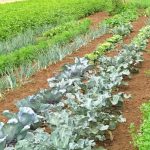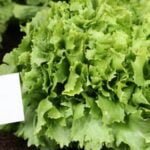Are you interested in growing your own winter vegetables but unsure of where to start? Look no further than the UC Master Gardeners Winter Vegetable Guide. In this comprehensive guide, you’ll find everything you need to know about successfully cultivating a variety of vegetables during the colder months. From planting tips to pest management, this guide has got you covered.
Winter vegetable gardening offers a unique and rewarding opportunity for gardeners. Not only does it provide fresh, homegrown produce during a time when many other crops are not available, but it also allows for the cultivation of unique cold-hardy vegetables that thrive in cooler temperatures. With the help of the UC Master Gardeners Winter Vegetable Guide, you can learn how to make the most of this season by creating a thriving winter garden.
By understanding the benefits of growing winter vegetables and learning from experienced UC Master Gardeners, you can gain valuable insight into successful gardening practices that will help you achieve an abundant and healthy harvest. Whether you’re a novice gardener or have been cultivating vegetables for years, this guide is packed with useful information to support your winter gardening endeavors.
So let’s dive in and explore the world of winter vegetable gardening with the UC Master Gardeners Winter Vegetable Guide.
Benefits of Growing Winter Vegetables
Winter vegetable gardening offers numerous benefits to both the gardener and the environment. When it comes to growing winter vegetables, there are several advantages that make it a worthwhile and rewarding activity. From reducing food costs to promoting environmental sustainability, the benefits of growing winter vegetables are plentiful.
One of the key benefits of growing winter vegetables is the cost savings associated with having a homegrown supply of fresh produce. During the colder months, the prices of certain vegetables tend to rise in supermarkets due to lower supply and higher demand. By growing your own winter vegetables, you can save money on grocery bills while enjoying nutritious and organic produce straight from your garden.
Additionally, growing winter vegetables can have a positive impact on the environment. The process of cultivating your own produce reduces the carbon footprint associated with transporting fruits and vegetables from farms to stores. Furthermore, home gardens often utilize sustainable practices such as composting and natural pest control methods, contributing to overall environmental conservation efforts.
Furthermore, growing winter vegetables allows individuals to enjoy a wider variety of fresh produce throughout the year and promotes self-sufficiency when it comes to food production. It also provides an opportunity for individuals to connect with nature and engage in a fulfilling and productive hobby during the colder months. With all these benefits in mind, it is clear that growing winter vegetables is an enriching experience that offers both practical and personal rewards.
| Benefit | Description |
|---|---|
| Cost Savings | Growing your own winter vegetables can save money on grocery bills. |
| Environmental Impact | Cultivating homegrown produce reduces carbon emissions and promotes sustainable gardening practices. |
| Diverse Produce | Growing winter vegetables provides access to a wider variety of fresh produce throughout the year. |
Understanding the Uc Master Gardeners Winter Vegetable Guide
The UC Master Gardeners Winter Vegetable Guide is an invaluable resource for anyone looking to grow their own vegetables during the colder months. This guide offers expert advice and tips on which vegetables are best suited for winter planting, how to prepare your garden for winter vegetable cultivation, and how to deal with common pests and diseases that may affect your winter crops.
When using the UC Master Gardeners Winter Vegetable Guide, it’s important to keep in mind the specific climate and growing conditions of your region. Not all winter vegetables will thrive in every area, so it’s essential to choose the right varieties for your location. The guide provides helpful information on the best vegetable varieties for different regions, ensuring that gardeners can make informed decisions when planning their winter gardens.
In addition to offering advice on which vegetables to plant, the UC Master Gardeners Winter Vegetable Guide also provides guidance on how to care for and maintain your winter garden. From soil preparation to watering and fertilizing techniques, this guide covers everything you need to know to ensure a successful winter vegetable crop. By following the recommendations outlined in the guide, gardeners can enjoy a bountiful harvest of fresh, nutritious produce throughout the winter months.
- Choose the right vegetable varieties for your region
- Follow recommended planting and care techniques
- Consult the guide for specific advice on dealing with regional pests and diseases
Best Winter Vegetables to Plant in Your Garden
When it comes to winter vegetable gardening, choosing the right vegetables to plant is crucial for a successful yield. The UC Master Gardeners Winter Vegetable Guide offers valuable insights into the best winter vegetables to plant in your garden. Here are some of the top winter vegetables recommended by UC Master Gardeners:
1. Leafy Greens: Vegetables like kale, spinach, and Swiss chard thrive in cooler temperatures and are packed with essential nutrients. These greens can be harvested throughout the winter months, providing a steady supply of fresh, healthy produce.
2. Root Vegetables: Root vegetables such as carrots, beets, and turnips are well-suited for winter planting. These vegetables can withstand colder temperatures and can be stored for extended periods, making them ideal for winter gardening.
3. Brassicas: Cabbage, broccoli, and cauliflower are part of the brassica family and are excellent choices for winter planting. These versatile vegetables are not only cold-hardy but also rich in vitamins and minerals, making them a valuable addition to any winter garden.
Understanding which winter vegetables to plant is essential for a bountiful harvest during the colder months. By following the recommendations provided in the UC Master Gardeners Winter Vegetable Guide, you can ensure that your garden is filled with an abundance of nutritious and delicious produce throughout the winter season.
Tips for Preparing Your Garden for Winter Vegetable Planting
When it comes to preparing your garden for winter vegetable planting, there are a few key steps to ensure a successful and bountiful harvest. Proper preparation is essential to provide the best growing conditions for your winter vegetables. Here are some tips to help you get started:
Clear Out Summer Vegetation
Before you can start planting your winter vegetables, it’s important to clear out any remaining summer vegetation from your garden beds. Remove any old, dead plants and weeds to make room for your new crops. This will also help prevent the spread of disease and pests that can overwinter in old plant material.
Amend Your Soil
After clearing out the old vegetation, take the time to amend your soil with compost or organic matter. Winter vegetables thrive in nutrient-rich soil, so adding compost will help improve the soil structure and provide essential nutrients for your crops.
Protect Your Garden Beds
As temperatures drop in the winter, it’s important to protect your garden beds from harsh weather conditions. Consider using row covers or cold frames to shield your winter vegetables from frost and freezing temperatures. This extra layer of protection can extend the growing season for certain crops and improve overall plant health.
By taking these steps to prepare your garden for winter vegetable planting, you’ll be setting yourself up for a successful and productive season. The UC Master Gardeners Winter Vegetable Guide provides valuable information on specific recommendations for preparing your garden beds based on your local climate and growing conditions. With proper preparation, you’ll be able to enjoy a diverse selection of fresh, home-grown winter vegetables throughout the colder months.
Common Winter Vegetable Garden Pests and Diseases
One of the challenges that gardeners face when growing winter vegetables is dealing with pests and diseases. Some of the most common pests that can affect winter vegetables include aphids, caterpillars, and snails. These pests can cause damage to the plants by feeding on the leaves, stems, and fruits. It is important to regularly inspect your winter vegetable garden for any signs of pest infestation and take appropriate measures to control them.
In addition to pests, winter vegetables are also susceptible to certain diseases such as powdery mildew, root rot, and fungal infections. These diseases can weaken the plants and reduce your crop yield if left untreated. To prevent diseases from spreading in your winter vegetable garden, it is crucial to practice good gardening hygiene by removing any infected plants or plant parts and properly disposing of them.
The Uc Master Gardeners Winter Vegetable Guide provides valuable information on identifying and managing common pests and diseases that affect winter vegetables. By following the guide’s recommendations for pest and disease control, you can help protect your winter vegetable garden and ensure a healthy harvest.
Here are some tips for preventing and controlling common pests and diseases in your winter vegetable garden:
- Implement crop rotation to reduce the risk of disease buildup in the soil.
- Use organic insecticides or natural predators like ladybugs to manage pest populations.
- Keep your garden clean by removing any fallen leaves or debris that could harbor pests or disease-causing pathogens.
- Monitor your plants regularly for any signs of pest damage or disease symptoms.
- Seek advice from Uc Master Gardeners or local gardening experts if you encounter unfamiliar pest or disease problems in your winter vegetable garden.
| Common Pests | Common Diseases |
|---|---|
| Aphids | Powdery Mildew |
| Caterpillars | Root Rot |
| Snails | Fungal Infections |
Harvesting and Storing Winter Vegetables
When to Harvest
Knowing when to harvest your winter vegetables is crucial to ensure they are at their peak flavor and nutritional value. The UC Master Gardeners Winter Vegetable Guide provides detailed information on the optimal time to harvest each type of vegetable. For example, leafy greens like kale and spinach are best harvested when the leaves are young and tender, while root vegetables such as carrots and beets should be left in the ground until they reach their full size.
Proper Storage Techniques
After harvesting your winter vegetables, it’s important to store them properly to maintain their freshness. The UC Master Gardeners Winter Vegetable Guide offers valuable advice on the best storage techniques for different types of produce. For instance, some vegetables like Brussels sprouts and cabbage can be stored in the refrigerator for several weeks, while others like potatoes and winter squash require a cool, dark space with good ventilation to prevent spoilage.
Preservation Methods
In addition to proper storage, the UC Master Gardeners Winter Vegetable Guide also provides recommendations for preserving excess winter vegetables for long-term use. This may include techniques such as blanching and freezing or pickling and canning, depending on the specific vegetable. By following these guidelines, you can enjoy a bountiful harvest of homegrown winter vegetables throughout the colder months.
By understanding how to harvest and store your winter vegetables properly, you can make the most of your garden’s bounty and enjoy fresh, nutritious produce throughout the season. The expertise provided by UC Master Gardeners Winter Vegetable Guide can help gardeners at all levels of experience maximize their success with growing and preserving winter crops.
Success Stories From Uc Master Gardeners Who Have Used the Winter Vegetable Guide
As we have explored in this article, winter vegetable gardening can be a rewarding and enjoyable experience. The UC Master Gardeners Winter Vegetable Guide provides valuable information and resources for those looking to grow their own winter vegetables. From understanding the best winter vegetables to plant to tips for preparing your garden for winter planting, this guide offers a comprehensive look at all aspects of winter vegetable gardening.
One of the most inspiring aspects of the UC Master Gardeners Winter Vegetable Guide is the success stories shared by gardeners who have used the guide to cultivate their own bountiful winter vegetable gardens. These stories offer real-life examples of how the guide has helped individuals overcome challenges, achieve successful harvests, and develop a deeper connection with their gardens.
These success stories serve as a reminder that with proper knowledge, preparation, and dedication, anyone can enjoy a thriving winter vegetable garden. Whether you are an experienced gardener or just starting out, the UC Master Gardeners Winter Vegetable Guide can provide the support and guidance needed to create a successful and fulfilling winter vegetable garden. So why not take advantage of this valuable resource and start planning your own winter vegetable garden today?
Frequently Asked Questions
What Vegetables Do You Plant for a Winter Garden?
In a winter garden, you can plant vegetables like kale, spinach, carrots, Brussels sprouts, and broccoli. These vegetables are hardy and can withstand the colder temperatures of the winter months.
What Month Do You Plant Winter Vegetables?
The best time to plant winter vegetables is generally in late summer or early fall, depending on your specific climate and the average first frost date in your area. This timing allows the vegetables to establish themselves before the colder weather sets in.
What Is the Fastest Growing Winter Vegetable?
One of the fastest-growing winter vegetables is arugula. It’s a leafy green that can be ready for harvest as soon as 30 days after planting. Other fast-growing options include radishes, lettuce, and certain varieties of spinach, which can also be harvested relatively quickly after planting.

If you’re looking to get into vegetable gardening, or are just looking for some tips on how to make your current garden better, then you’ve come to the right place! My name is Ethel and I have been gardening for years. In this blog, I’m going to share with you some of my best tips on how to create a successful vegetable garden.





